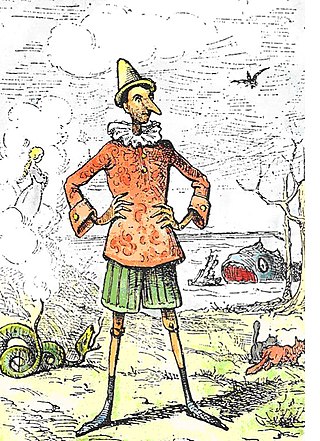
Mores are social norms that are widely observed within a particular society or culture. Mores determine what is considered morally acceptable or unacceptable within any given culture. A folkway is what is created through interaction and that process is what organizes interactions through routine, repetition, habit and consistency.
Deception is an act or statement that misleads, hides the truth, or promotes a belief, concept, or idea that is not true. This occurs when a deceiver uses information against a person to make them believe an idea is true. Deception can be used with both verbal and nonverbal messages. The person creating the deception knows it to be false while the receiver of the message has a tendency to believe it. It is often done for personal gain or advantage. Deception can involve dissimulation, propaganda and sleight of hand as well as distraction, camouflage or concealment. There is also self-deception, as in bad faith. It can also be called, with varying subjective implications, beguilement, deceit, bluff, mystification, ruse, or subterfuge.

Ethnography is a branch of anthropology and the systematic study of individual cultures. Ethnography explores cultural phenomena from the point of view of the subject of the study. Ethnography is also a type of social research that involves examining the behavior of the participants in a given social situation and understanding the group members' own interpretation of such behavior.

A lie is an assertion that is believed to be false, typically used with the purpose of deceiving or misleading someone. The practice of communicating lies is called lying. A person who communicates a lie may be termed a liar. Lies can be interpreted as deliberately false statements or misleading statements, though not all statements that are literally false are considered lies – metaphors, hyperboles, and other figurative rhetoric are not intended to mislead, while lies are explicitly meant for literal interpretation by their audience. Lies may also serve a variety of instrumental, interpersonal, or psychological functions for the individuals who use them.
In Japan, honne refers to a person's true feelings and desires, and tatemae refers contrastingly to the behavior and opinions one displays in public. This distinction began to be made in the post-war era.
Participant observation is one type of data collection method by practitioner-scholars typically used in qualitative research and ethnography. This type of methodology is employed in many disciplines, particularly anthropology, sociology, communication studies, human geography, and social psychology. Its aim is to gain a close and intimate familiarity with a given group of individuals and their practices through an intensive involvement with people in their cultural environment, usually over an extended period of time.

Moral character or character is an analysis of an individual's steady moral qualities. The concept of character can express a variety of attributes, including the presence or lack of virtues such as empathy, courage, fortitude, honesty, and loyalty, or of good behaviors or habits; these attributes are also a part of one's soft skills.
Egocentric bias is the tendency to rely too heavily on one's own perspective and/or have a higher opinion of oneself than reality. It appears to be the result of the psychological need to satisfy one's ego and to be advantageous for memory consolidation. Research has shown that experiences, ideas, and beliefs are more easily recalled when they match one's own, causing an egocentric outlook. Michael Ross and Fiore Sicoly first identified this cognitive bias in their 1979 paper, "Egocentric biases in availability and attribution". Egocentric bias is referred to by most psychologists as a general umbrella term under which other related phenomena fall.
The Japanese language has a system of honorific speech, referred to as keigo, parts of speech that show respect. Their use is mandatory in many social situations. Honorifics in Japanese may be used to emphasize social distance or disparity in rank, or to emphasize social intimacy or similarity in rank. Japanese honorific titles, often simply called honorifics, consist of suffixes and prefixes when referring to others in a conversation.

Response bias is a general term for a wide range of tendencies for participants to respond inaccurately or falsely to questions. These biases are prevalent in research involving participant self-report, such as structured interviews or surveys. Response biases can have a large impact on the validity of questionnaires or surveys.

In social psychology, pluralistic ignorance is a phenomenon in which people mistakenly believe that others predominantly hold an opinion different from their own. In this phenomenon, most people in a group may go along with a view they do not hold because they think, incorrectly, that most other people in the group hold it. Pluralistic ignorance encompasses situations in which a minority position on a given topic is wrongly perceived to be the majority position, or the majority position is wrongly perceived to be a minority position.
Normality is a behavior that can be normal for an individual when it is consistent with the most common behavior for that person. Normal is also used to describe individual behavior that conforms to the most common behavior in society. However, normal behavior is often only recognized in contrast to abnormality. In many cases normality is used to make moral judgements, such that normality is seen as good while abnormality is seen as bad, or conversely normality can be seen as boring and uninteresting. Someone being seen as normal or not normal can have social ramifications, such as being included, excluded or stigmatized by wider society.
Behavioral geography is an approach to human geography that examines human behavior by separating it into different parts. In addition, behavioral geography is an ideology/approach in human geography that makes use of the methods and assumptions of behaviorism to determine the cognitive processes involved in an individual's perception of or response and reaction to their environment. Behavioral geographers focus on the cognitive processes underlying spatial reasoning, decision making, and behavior.
Erich Goode is an American sociologist specializing in the sociology of deviance. He has written a number of books on the field in general, as well as on specific deviant topics. He was a professor at the State University of New York at Stony Brook.
A half-truth is a deceptive statement that includes some element of truth. The statement might be partly true, the statement may be totally true, but only part of the whole truth, or it may use some deceptive element, such as improper punctuation, or double meaning, especially if the intent is to deceive, evade, blame or misrepresent the truth.
The following outline is provided as an overview of and topical guide to the human self:

Rudeness is a display of actual or perceived disrespect by not complying with the social norms or etiquette expected within a relationship, social group, or culture. Social norms are established as the essential guidelines of normally accepted behavior within a given context, and individuals often establish personal boundaries to meet their own needs and desires within smaller settings, such as friendships. To be unwilling to align one's behavior with these norms known to the general population of what is socially acceptable is to be rude. These norms may resemble a sort of "unspoken law", with social repercussions or rewards for violators or advocates, respectively.
Interpersonal deception theory (IDT) is one of a number of theories that attempts to explain how individuals handle actual deception at the conscious or subconscious level while engaged in face-to-face communication. The theory was put forth by David Buller and Judee Burgoon in 1996 to explore this idea that deception is an engaging process between receiver and deceiver. IDT assumes that communication is not static; it is influenced by personal goals and the meaning of the interaction as it unfolds. IDT is no different from other forms of communication since all forms of communication are adaptive in nature. The sender's overt communications are affected by the overt and covert communications of the receiver, and vice versa. IDT explores the interrelation between the sender's communicative meaning and the receiver's thoughts and behavior in deceptive exchanges.
Hypocrisy is the practice of feigning to be what one is not or to believe what one does not. The word "hypocrisy" entered the English language c. 1200 with the meaning "the sin of pretending to virtue or goodness". Today, "hypocrisy" often refers to advocating behaviors that one does not practice. However, the term can also refer to other forms of pretense, such as engaging in pious or moral behaviors out of a desire for praise rather than out of genuinely pious or moral motivations.
Non-verbal leakage is a form of non-verbal behavior that occurs when a person verbalizes one thing, but their body language indicates another, common forms of which include facial movements and hand-to-face gestures. The term "non-verbal leakage" got its origin in literature in 1968, leading to many subsequent studies on the topic throughout the 1970s, with related studies continuing today.






